by Anna Smith of Annabode + Co.
Ah, open shelving…it’s a scary beast, especially when you have kids. I’ve spoken with many people who say they’d never attempt it in a million years, that it seems like too much dusting, or that they don’t like clutter in the kitchen. Granted, it’s certainly not for everyone — but if you’ve been contemplating taking the plunge, there are a few key considerations you’ll need to keep in mind:
Invest in a few well-designed, functional pieces.
The more beautiful the items on your shelves, the better your kitchen will look. This does NOT mean everything you own has to be replaced with expensive, designer pieces, but rather that you’ll want to upgrade some items according to your tastes. Not everything has to match or have a cohesive color palette (although that looks awesome too) — but you should at least like everything aesthetically that will be on display.
Maybe your glassware is a jumbled mix of inherited items but you’re a minimalist at heart. Or maybe you have a vast collection of plastic cutting boards that are looking a little tired lately. Whatever it is, invest a little money in replacing what you don’t like with some things that you do (and don’t forget to donate whatever you can’t sell!).
Some items that look great on open shelving:
- Dishes, bowls, glassware
- Cutting boards
- Jars, canisters, etc.
- Non-electric coffee makers (think a Chemex or French Press)
Display what you can that’s attractive, hide what you can that’s not.
Once you install open shelving, whatever hidden storage you do have left becomes extremely valuable — so why waste it? If you have the room and it’s attractive, stick it on a shelf. An easy, inexpensive way to increase your hidden storage is to put your dry goods on display in glass containers (World Market and Ikea have great options for this!).
Don’t think you can remember what’s what? I like to write in sharpie on the bottom of each vessel, so I always know what’s inside. For things like mixes, I sometimes cut out the instructions and tape them to the bottom of the jar.
If you have kids, things like baby bottles, sippy cups, etc. should be delegated to a drawer or cabinet. Make sure to find a box or tupperware you can store small, loose items in to maximize storage space and keep you from hunting for important items.
Store your most-used items within easy reach.
The trick to having open shelving and not dusting every few days is that you should put your most-used, most-washed items on them. We have all of our dishes and glassware in the open and every once in a while I’ll run a cloth along the actual shelf, but I never have to dust the actual objects because of it.
Also — if you’re installing more than one row of shelves, make sure to store your most-used items at the lowest level and your least-used (servingware, for instance) at the highest. The last thing you want to be doing every day is getting out a stepladder just to get a glass of water!
Mix things up with a little decor.
Every space looks better with a few plants and some artwork, and the kitchen is no exception! Just be sure your plant pots are the indoor kind or have saucers beneath them — you don’t want to ruin your new shelves with water stains. Try leaning a vertical print or two behind your other kitchen items to add height, or hang them on the wall just above the shelves.
Don’t overload your shelves.
Always, always check the maximum load weight of your support system, whether it’s brackets or hidden hardware for floating shelves, and keep in mind what you’ll be storing on them. Heavy items like cast-iron pots or dry goods will obviously need more support than glassware. If the shelves span more than two studs, you may need additional brackets in the center.
Depending on the installation, floating shelves can support a fair amount of weight but it’s important to do your research beforehand. (For our shelves, we used blind shelf supports from Rockler Woodworking, which support 50 lbs.)
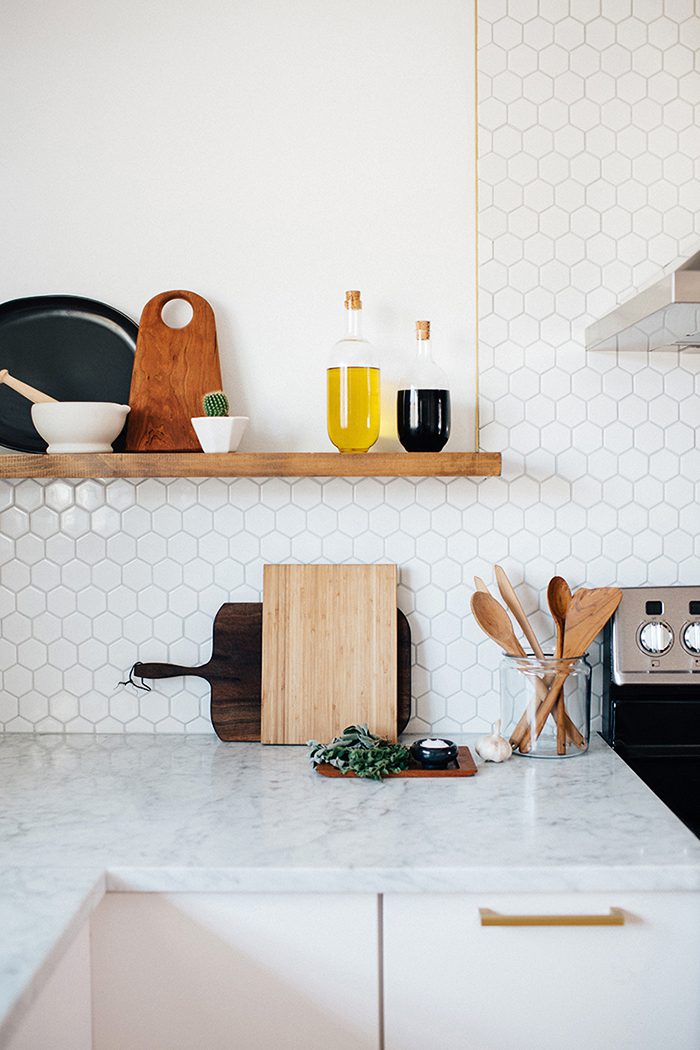
Optimize your hidden storage.
Like I said before, hidden storage is precious in a kitchen with open shelving! If you have older cabinetry there are still things you can do to maximize what space you do have, and plenty of DIY solutions on Pinterest. I’ve seen awesome projects like hidden drawers in toekicks and vertical dividers for cutting boards and baking sheets. There are even companies that retrofit old cabinets with new drawer systems.
A pantry can also be extremely valuable in a kitchen with open shelving. Our home’s front hall closet was formerly between the living and dining rooms of our house, but when we remodeled and turned the dining room into the kitchen, it became the perfect place for some extra storage. Now it houses all of our small appliances — our mixer, food processor, blender, bread maker, etc. Everything is within arm’s reach, and our counters are clear and easy to clean. In the end, we’ve been very happy living and cooking without upper cabinets and don’t regret a thing!
Do you think open shelving in the kitchen is a good idea? If you have it yourself, how do you make it work?
Anna Smith wants to live in a world where good design is accessible and affordable for everyone. An interior designer based in Denver, Colorado, she creates modern homes for clients across the country through her firm Annabode + Co. When not buried in swatches and throw pillows, you can find her elbow-deep in renovations at her own fixer-upper. Find out more about working with Anna at Annabode.com.
P.S. Where to start: how to remodel a kitchen.
[Photos via The Hive / My Scandinavian Home / Homestead Seattle / Aesthetica / Elements of Style / Annabode + Co.]


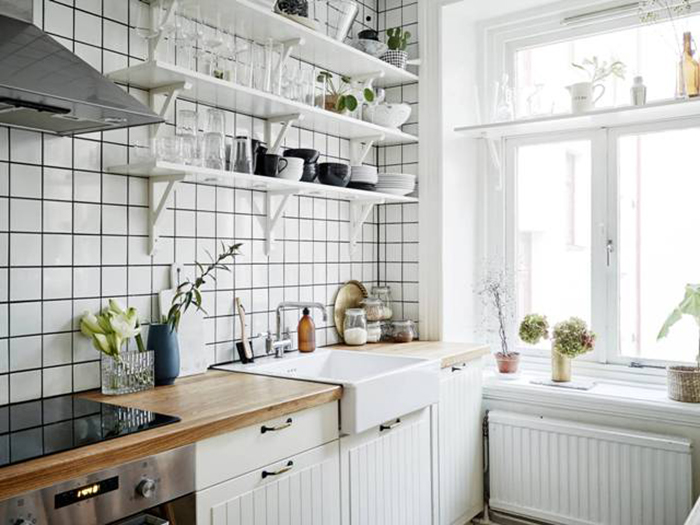
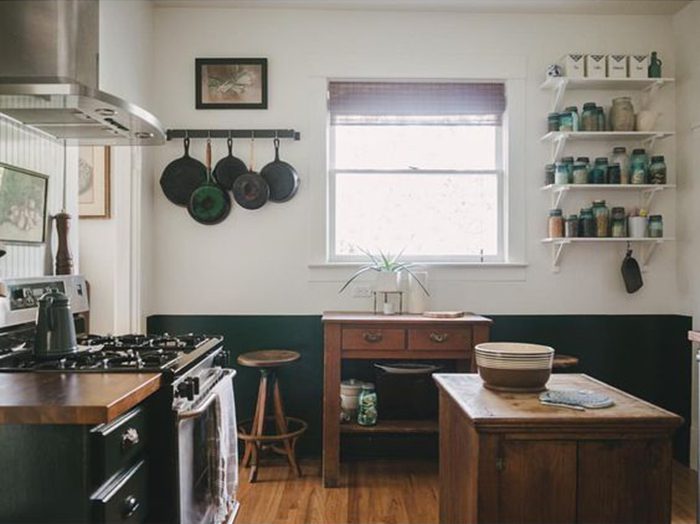

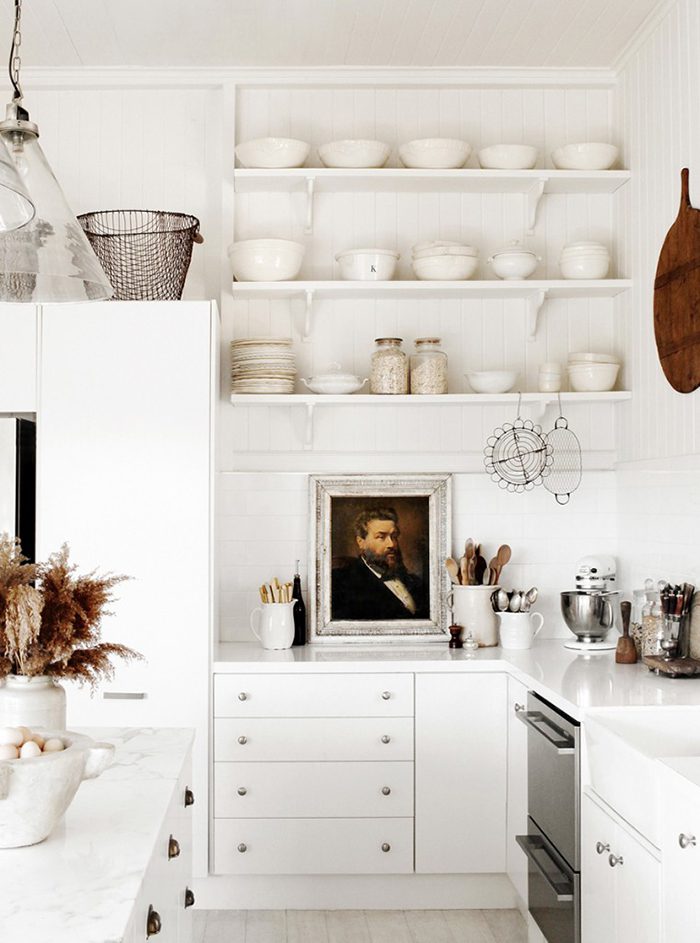
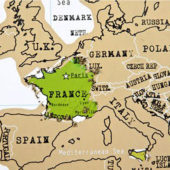


































9 Comments